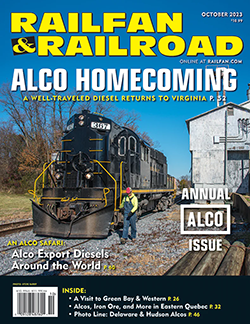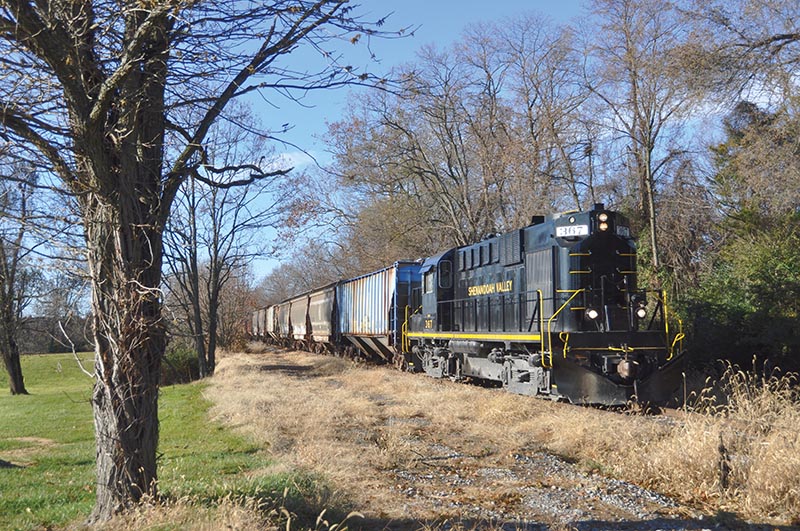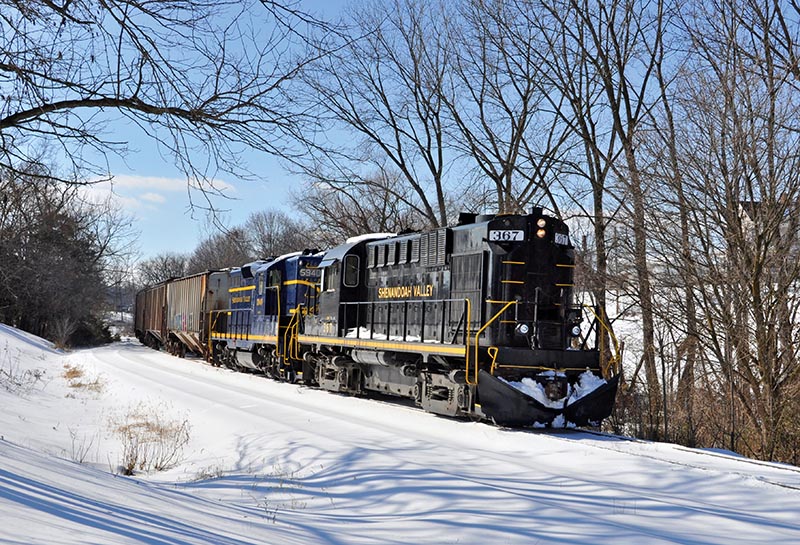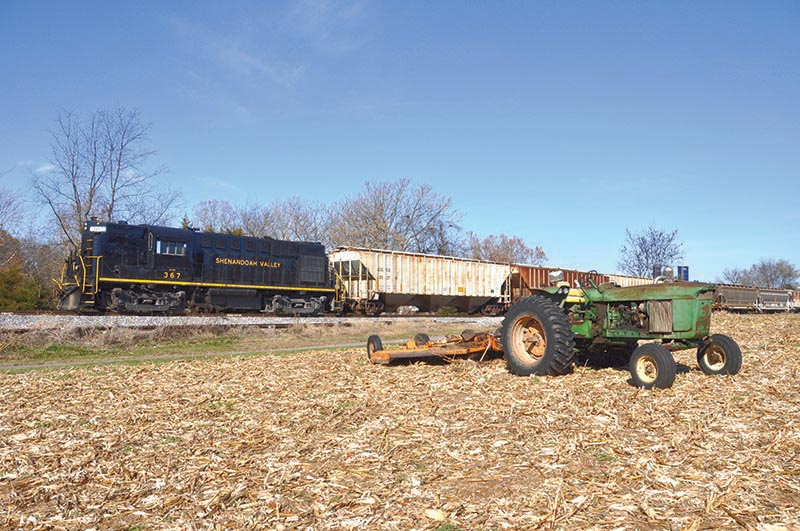 by John Leopard/photos as noted
by John Leopard/photos as noted
Virginia’s beautiful Shenandoah Valley is not short on history, including Civil War battles and early railroad construction. Predecessors of Norfolk & Western, Baltimore & Ohio, and Chesapeake & Ohio all vied for routes through the length of the valley. C&O’s path was across the valley between Waynesboro and Staunton (pronounced “Stanton”), a route now served by Shenandoah Valley Railroad (SVRR).
After the Civil War, the competing Baltimore & Ohio and Pennsylvania railroads were interested in building through the Shenandoah Valley in efforts to connect with other railroads that were attempting to link the southern states. B&O-backed companies built a route west from Harpers Ferry, W.Va., through Winchester and on south toward Harrisonburg, Va. B&O next backed a charter for Valley Railroad Company that was to build from Harrisonburg south through Staunton and Lexington, on the way to a point near Roanoke where connections were to be made with Virginia & Tennessee Railroad.

ABOVE: DGVR 367 is northbound at Verona leading a long consist on November 25, 2019. —Lou Gerard photo
The tracks between Harrisonburg and Staunton were completed in 1874, and grading and bridgework were underway in various locations between Lexington and Salem, near Roanoke. Rails were completed as far as Lexington and a connection with a C&O branch there in 1882. By this time, Valley Railroad was running out of capital and failed to finish the remainder of the line between Lexington and Salem. Now virtually a dead-end line of B&O, after improved roads came to the region, like many other branch lines it struggled to make a profit. B&O stopped using its Valley Branch from Lexington to Staunton in October 1942. The section between Lexington and Harrisonburg was sold to Chesapeake Western Railroad soon after, on January 1, 1943.
Chesapeake Western was a coal-hauling short line using an east-west line built across the Valley between Elkton and Bridgewater, passing through Harrisonburg and connecting with B&O’s Valley Branch there. CW opened for operation in March 1896, and its main outlet was a connection at Elkton with N&W’s Roanoke to Hagerstown main line that ran the length of the Shenandoah Valley. CW almost immediately abandoned and pulled up the track from Staunton south to Lexington due to a lack of business. CW continued a meager existence until being sold to N&W in 1954. CW had dieselized in 1946 with three Baldwin-built DS-4-4-660s. When the Baldwins needed replacing, then-new owner of the line N&W was tapped for replacements. These came in the form of Alco T-6s. One was purchased by CW in 1963 and another in 1964. A third was sent to CW soon after. The three Alco switchers served well until being retired in 1985. NS GP38ACs were the most common replacements used on the CW locals out of Harrisonburg.
Chesapeake Western survived as a separate entity until the 1982 merger of N&W with Southern Railway. Under Norfolk Southern ownership, traffic on the line south of Pleasant Valley began to suffer — so much so that NS was granted permission to abandon the line to Staunton in February 1992. The following year, the track from Pleasant Valley to Staunton was acquired by lineside shippers and interests, calling the new company Shenandoah Valley Railroad. At first, the sporadic train operations were contracted to various short line operators including the connecting Buckingham Branch Railroad. But as traffic grew and stabilized, the line’s owners settled with the current operator, Durbin & Greenbrier Valley, which also operates freight hauler West Virginia Central and heritage railway Cass Scenic Railroad.

ABOVE: RS-11 367 and GP9 5940 are departing Weyers Cave for Pleasant Valley after switching the Houff Corp. on January 18, 2022, after a snowfall blanketed the region. —Lou Gerard photo
Enter the Alco
Toward the end of 2011, D&GV employee Ben True noticed an online classified advertisement posted to RailSwap announcing the availability of ex-N&W Alco RS-11 367, which last operated on Maine Coast Railroad, and had been stored since the railroad shut down in 2000. According to the ad, the owners attempted to place the locomotive at a museum, but those efforts never came to fruition, and so the time came to either “sell it or scrap it.” The listing described the condition of the locomotive at the time, and advised it would “need the usual servicing before being moved.” In closing, the owners said they would “consider reasonable offers, but time is short.”
When the ad was posted, the unit was privately owned and was stored on Louisville, New Albany & Corydon Railroad, a short line located in southern Indiana. True was in need of another locomotive to support SVRR operations; at the time, they had an EMD GP9 and a small Baldwin RS4TC switcher. The little RS4TC wasn’t much help over the road when operated as multiple units with the GP9, and it just wasn’t up to the task when it was alone. In addition, the GP9 needed attention on several fronts that would take more than a day to address, and there just was not a break in the daily operations to give it that attention. True presented several options to management of acquiring a GP9, GP7, or SD9, but they were deemed too expensive or cost-prohibitive to move…



